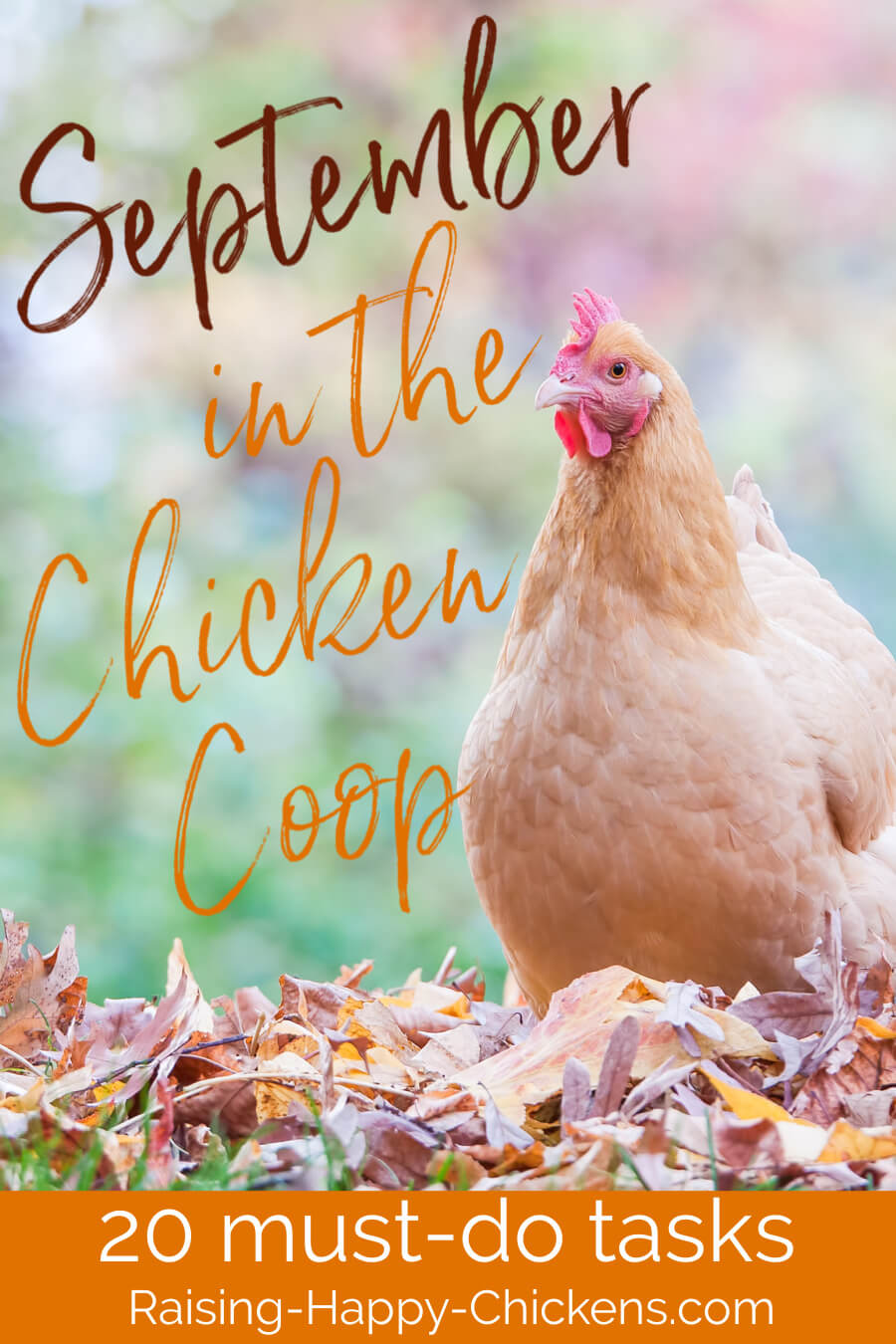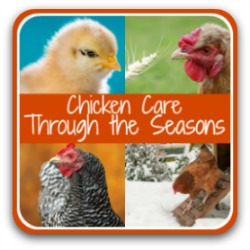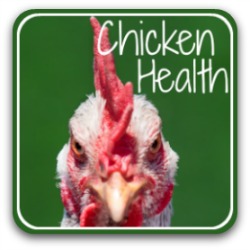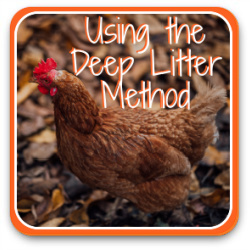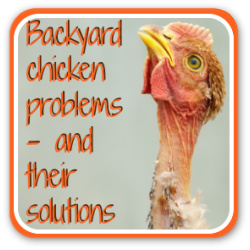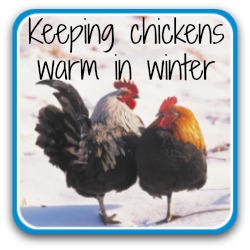- Home
- Monthly care
- September
Raising chickens in September: 20 tasks for a healthy flock.
Nights are starting to draw in. Temperatures are still warm, but there's a definite feel of autumn (Fall) in the air.
What do we need to do to care for our flock, keeping them healthy and happy during this month?
We're now into the transition period between summer and autumn (Fall).
Winter is still a few weeks away, but there's no harm in starting tasks this month which will see our chickens through those colder months.
It's still important to remember to keep your chickens cool and hydrated during the hotter days, as well as thinking ahead to how they'll get through the snow and ice of winter.
Remember: if you sign up for my newsletter you'll get a free downloadable checklist of all the tasks, each month.
Keep it to hand so that you're sure of having completed everything by the month's end.
Are you in the southern hemisphere?
This article is written with the northern hemisphere in mind.
If you're in the southern hemisphere and dealing with more or less the opposite type of weather to this article, try using my tasks for whichever month comes closest to your season.
1. Nest boxes.
As hens are likely to start to moult later this month and into October, their egg-laying will slow down and possibly stop (depending largely on the breed).
It's a good time to assess your nest boxes, particularly if you've had any problems this year with hens laying away from the nest boxes you provide, or issues with egg-eating.
What to do.
1. Take a look at this nest box article which goes into detail about what nest boxes should be like, and why.
2. Having read that article, take a long, hard look at your nest boxes. Do they need changing? Are they in the right position - slightly raised from the floor, in a place that's away from draughts and as quiet, safe, and dark as possible? If not, take time this month to change their position.
Want to know what happens if your nest box isn't private enough? (according to your hens!)
3. Assess the kind of bedding you use in your nest boxes. Has it worked during this year? Have your hens managed to kick it all over the floor, or has it got particularly dirty? If so, consider using something else. If you can, trial nest liners which are both easy to use and hygienic.
4. Mites have a particular liking for nest boxes, especially if you use wood. You'll find information in this article about how to check for and treat mites - and September is a good time to do it.
2. Clean that coop!
We'll be doing a deep clean of the coop next month, but now is the time to do some pre-checking to split the load. Doing this now means less to do in the next month or two!
What to do.
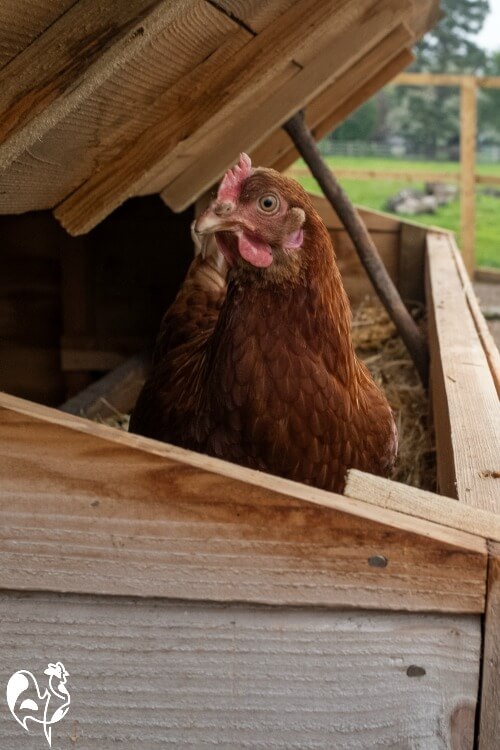 Clear out ventilation to make sure it's ready for the winter.
Clear out ventilation to make sure it's ready for the winter.5. Ventilation will become a really critical part of maintaining a healthy flock in the winter, so it's as well to make sure now that it's not blocked.
Chickens need a good air flow above the roost, but no draughts at or below roosting level.
Autumn leaves have a habit of blocking ventilation holes and guttering, and spiders will have been busy during the summer months but are now slowing down.
Take some time to brush them, and anything else blocking your ventilation holes, away.
6. Autumn leaves are a great (and free) source of bedding, if you use the deep litter method. Gather them this month to make sure they are completely dry for when we clean out the coop completely in October.
Don't use oak leaves, or any that have been treated with chemicals, though, and don't use leaves in nest boxes - the hens will kick them all over the floor as they try to make a nesting place.
But on the floor of the coop itself you'll find your flock loves to rummage round in them, looking for bugs. Pine needles are a good bedding material, too.
7. Take a look at the outside of your coop. Does it need painting? This is probably the last month (in the northern hemisphere) where the weather will be dry and warm enough to paint.
8. Now check all the latches on your coop. Are they rusty? Do they need replacing? We'll soon be at that time of year when predators are looking for food. Starting to prepare now means they'll be disappointed.
3. Plan to turn your chickens' run into an orchard!
Back when we were planning for the heat of the summer, we looked at how trees and bushes can provide good shelter for chickens in their run.
If they're fruit trees or berry bushes, so much the better - instant food supplements for your flock!
September is a good time to begin planning to buy some. Planting times will depend on where you live - in Italy, where I live, the end of September and into October is the right time so that roots can develop during the winter and the trees will be established by Spring.
What to do.
9. Take a look around your own area. Which trees grow well for your neighbours? Ask advice from nurseries or garden centres - or from people you know to be avid gardeners. Not every type of fruit tree suits every region.
10. Apple trees are usually a good bet, particularly since it's possible to get dwarf varieties if you have a small run. You may have heard that apple seeds are poisonous to chickens. They do contain a small amount of arsenic, but they'd need to eat massive amounts for it to have any ill effect.
See my article about whether chickens can eat apples for more details.
My flock loves rummaging about among windfalls - which always contain lots of yummy worms - and the trees, once established, provide dense shade in the summer months.
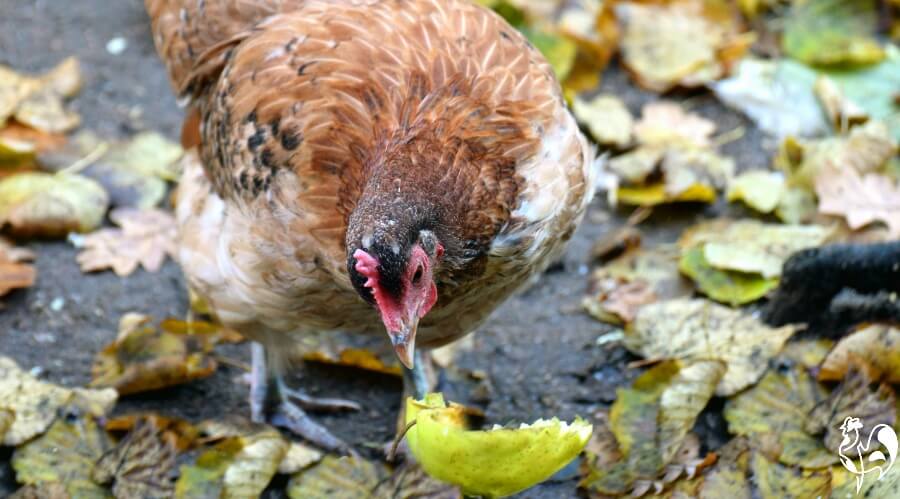 Chickens in the autumn enjoy windfalls, including the bugs!
Chickens in the autumn enjoy windfalls, including the bugs!11. Avoid citrus trees like oranges and lemons. The peel contains a small amount of limonene which, whilst not poisonous in itself, stops the hens absorbing calcium properly. And at this time of year, hens need calcium to help grow their new feathers.
It's unlikely your chickens would eat the peel anyway - mine avoid it instinctively - but better safe than sorry.
12. Other types of fruit tree worth considering are: cherry, fig, pear, peach, persimmon and plum. In terms of bushes, the mulberry bush is a great choice - chickens love the berries.
However, the white mulberry in particular can be invasive. Keep it in a large pot to prevent the roots spreading.
4. Ramp up the chicken friendly health foods!
Towards the end of the month, start thinking about moulting. Your flock are likely to begin the moult a little later in the year (depending on the temperature and hours of daylight in your region) and we'll cover what to do, next month.
But this month, as egg-laying begins to slow down so the hens can conserve all the protein they need to grow a whole new set of feathers, you can begin the process of stocking up on higher protein foods.
Don't start to give them, though, until moulting has begun. Too much protein can be damaging to chickens' health.
What to do.
13. During the last week of the month, begin making some fermented feed. Find out about the benefits of fermenting here.
14. How to ferment chicken feed: this article walks you through four simple steps to fermenting food for your flock, from choosing the right container to exactly what to do.
15. Gather good information about other protein-rich foods for chickens. I've compiled a list of the ten best protein rich foods which will help see your flock through not only the moult, but the cold days of winter ahead.
Have a look at it, and begin to stock up now - don't leave it until you actually need it.
16. Did you know that parsley is full of protein? Easily grown outside in the summer, planting seeds now will enable you to grow it inside all winter. Start it in a tray on a south-facing window, or under a grow lamp. Learn more about parsley here.
17. If you grow your own tomatoes, you're likely to have a glut now. Take any ripe tomatoes you don't want to use or preserve and feed to your hens.
You may read that tomatoes are poisonous for your chickens. They're not. The tomato vines are poisonous. Tomatoes themselves aren't very high in protein but do have high levels of lycopene, a known anti-oxidant. And chickens love the ripe ones - they're attracted by the colour red.
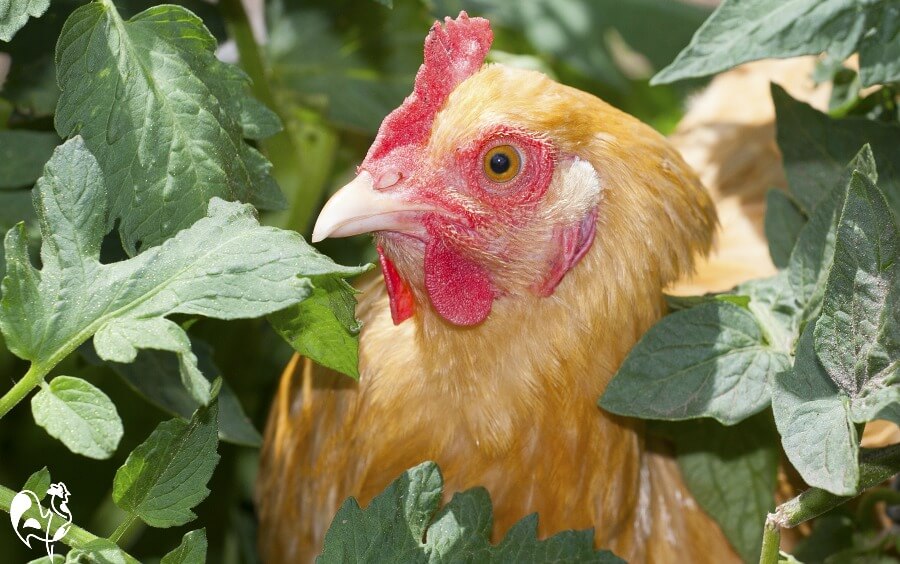 Tomato vines are poisonous for chickens - keep them away.
Tomato vines are poisonous for chickens - keep them away.5. Look after chicks and plan for more!
Most people hatch in the Spring, but if you've hatched your own chicks later in the year, you need to be careful that they're still getting enough warmth, particularly as temperatures at night drop.
Unless you've used a broody hen - who will make sure the chicks are kept warm - chicks should not go outside until they're fully feathered. If you have no choice but to put them into the coop before they are, you need to make sure they've got adequate heat available.
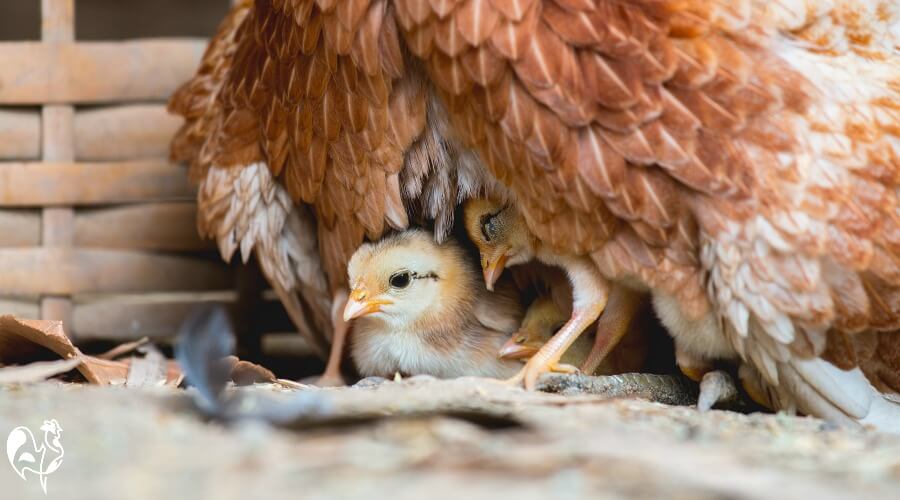 If you're lucky enough to have a broody hen, she will keep the chicks warm without help.
If you're lucky enough to have a broody hen, she will keep the chicks warm without help.September is a time for planning, too. So if you're planning to incubate your own again in the Spring, now is a good time to assess how this year went, and if necessary to alter how you hatch next season.
What to do.
18. Avoid heat lamps, even (especially) if your chicks are outside. They cause fires.
Instead, use a radiant heat source like Brinsea's Ecoglow heaters. If you don't have electricity in your coop then your chicks need to stay inside until they're ready.
19. How did your incubation go this year? Did you have problems with a number of chicks dying late in the process? Or hatching with problems like wry neck or spraddle leg?
You may need to review your incubator. If it was a home made incubator and the hatch was not a success, consider getting a commercially made incubator. These days, they're highly sensitive to temperature and humidity levels and able to adjust accordingly.
20. What breeds did you get this year, and how did they work out? With climates changing, the need to choose breeds which are able to cope with extreme heat, or extreme cold, is more important than ever.
I have a Pinterest board all about different chicken breeds. Take a look - and don't forget to "follow" me while you're there!
Remember: to get my monthly checklist of tasks, sign up for my newsletter here.
Whatever else you do - enjoy September with your flock!
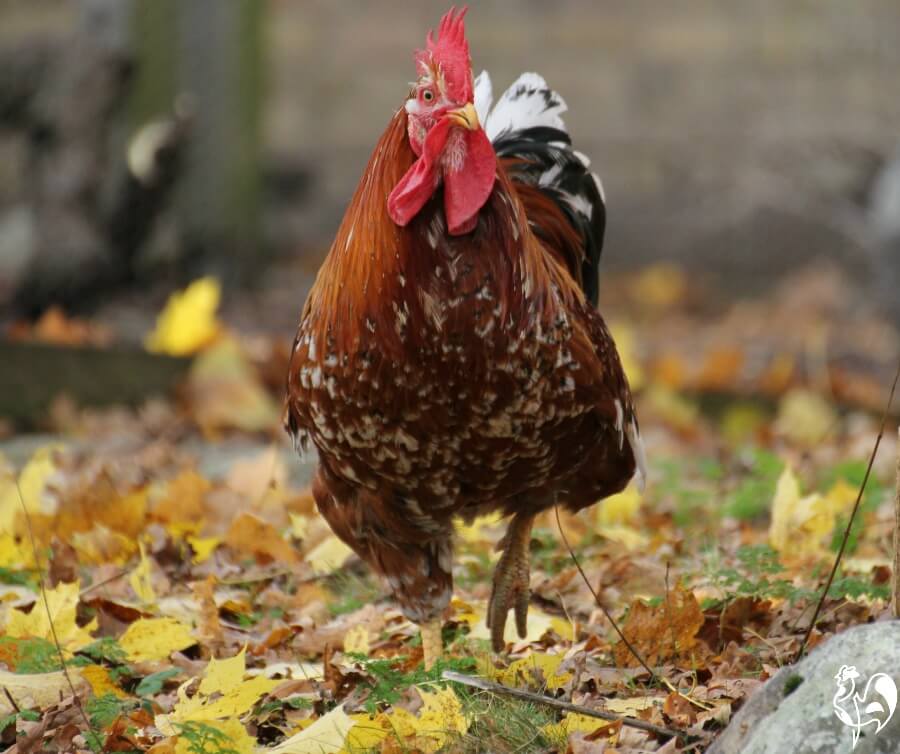
Where would you like to go now?
Sources.
A lot of "facts" you'll find on the internet are often people's individual views, based on inaccurate information repeated from poor quality sources.
The information I provide in this article and others is based not just on my own experience, but on evidenced facts from scientific, peer-reviewed research and books from highly respected and experienced poultry keepers such as Gail Damerow.
Some of the trusted sources I have used in this article are these.
1. Woodland Trust: Tree Planting for Free Range Poultry. Pub. Woodland Trust, 2014.
2. Woodland Trust: Enhanced bird health results in premium woodland produce. Pub. Woodland Trust, 2016.
- Home
- Monthly care
- September
